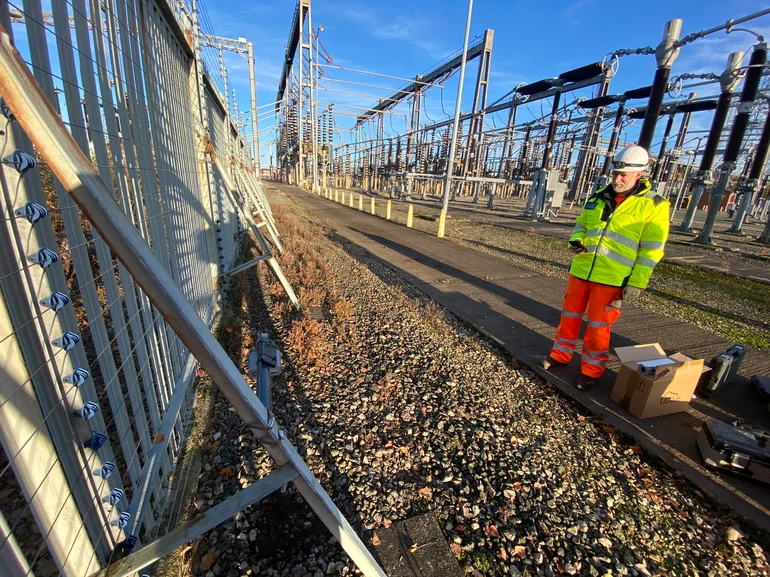- Impact : Radical
- Key benefits/themes : Customers, Environment, Operational
- Project partners : Previsico, NGET, Frazer-Nash Consultancy and the University of Liverpool
The Challenge
National Grid Electricity Transmission (NGET) assets such as towers and substations are fundamental in providing customers with electricity. Given their strategic importance, these assets are designed to withstand a variety of environmental hazards including storms, coastal and river flooding, and erosion. The increased frequency and complexity of extreme weather events potentially exposes these assets to greater risk and means that they need to be constantly monitored if they are to continue to support an uninterrupted electricity supply to millions of NGET customers.
Weather risk hazard notifications are currently manually reviewed by experts in NGET’s network control room. This process is time consuming as it requires a great deal of experience and knowledge of both the geographical area and the assets located within it. The hazards are graded and categorised based on risk, which informs what action is taken. As many as ten alerts per day can be received from both internal and external sources, including the Environment Agency and Natural Resources Wales, putting additional pressures on the control room experts.
The Solution
The ’Environmental Risk and Assurance (ERA)’ project aims to develop a prototype platform which will categorise the risks of extreme weather and environmental events, including flooding (fluvial and surface water) and erosion (fluvial and hillslope), by using information from the sources listed:
- Weather and secondary environmental data.
- Unique hazard nowcasting and forecasting data.
- Field data collected by specialist sensors.
“Collaborations like this are helping us unlock the new capabilities, we will need to manage our assets in the face of the increasing impacts of climate change. The project will harness the data available to us more effectively to ensure our network infrastructure remains resilient against extreme weather events in the future.”
Nicola Todd, Head of Strategy & Innovation, NGET
The Project
This project originated as a response to a successful Call for Innovation which was facilitated by the EIC on behalf of NGET in 2020. It delivers an accessible, multipurpose platform and tool for collating weather and environmental hazard data which gives control room users the ability to review the hazard status of all assets across the UK.
The project is currently in the final stages ahead of control room trials. If these trials are successful, the aim will be to roll the platform out into business as usual.
A key lesson learnt to date is that the complex and strategically important nature of transmission asset sites can make access challenging. For similar projects in the future, it’s recommended that site access and permission for testing are considered ahead of project kick-off and the appropriate budget allocated.
The Impact
- Environmental : Minimises the likelihood of hazards going undetected and identifies long-term/short-term environmental risks to assets.
- Customer : By proactively managing hazards to infrastructure and assets, NGET will mitigate the risk of prolonged power outages during an extreme event. This will allow NGET to ensure reliability of supply to the customer.
- Operational : The tool will be deployed in the NGET control room as a method of monitoring and forecasting weather and environmental hazards around transmission assets, streamlining operations and maximizing efficiency.
Next steps
Following evaluation of the control room trials, the next step will be to install sensor hardware in and around NGET sites. Further trails will also be required to support the ongoing development of the platform.

